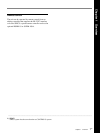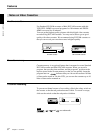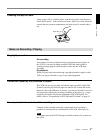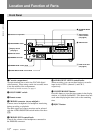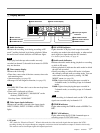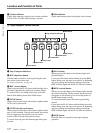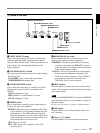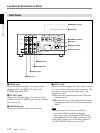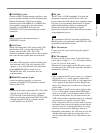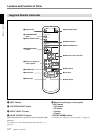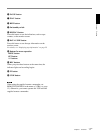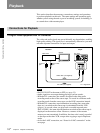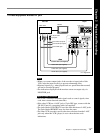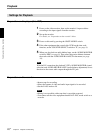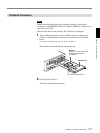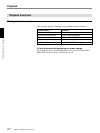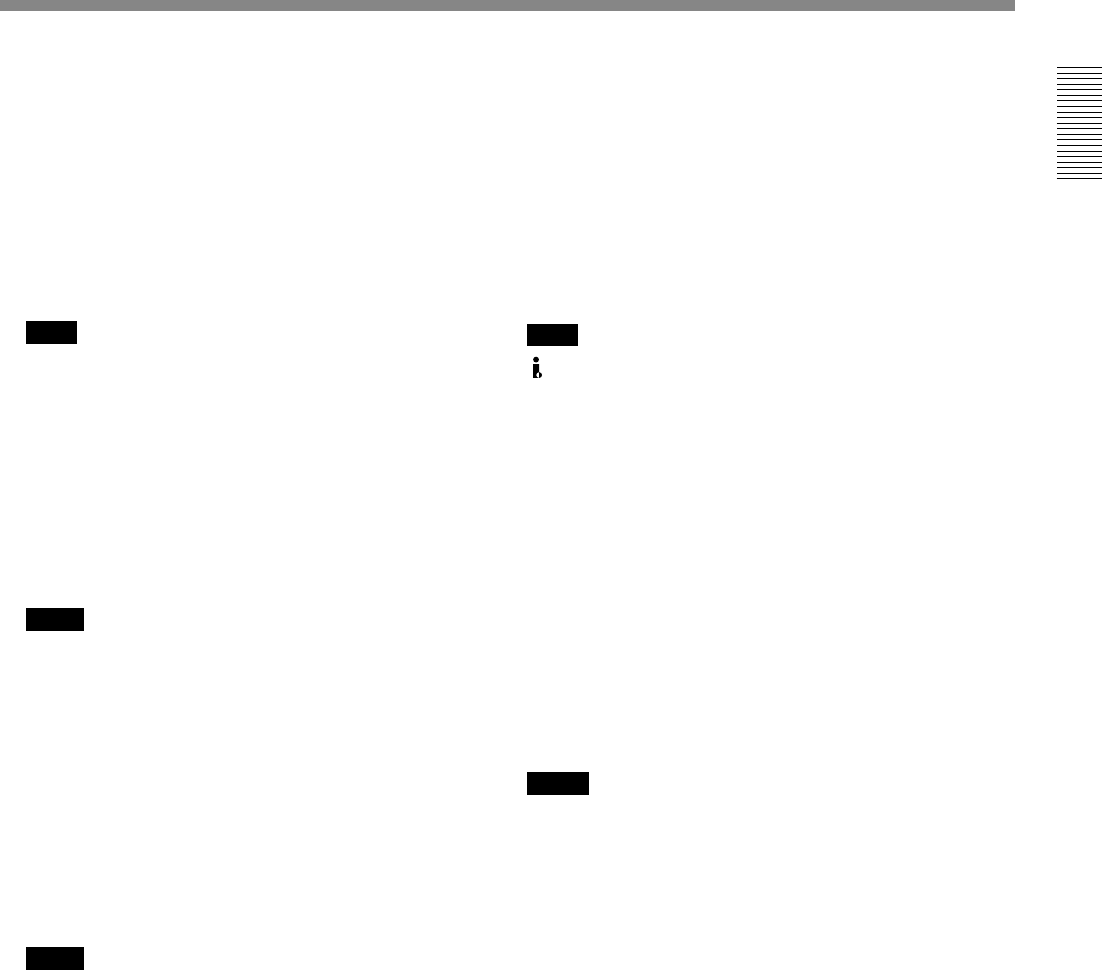
Chapter 1 Overview
Chapter 1 Overview 15
EN
5 CONTROL S jacks
Connect a SIRCS-system remote controller so that
you can operate a number of VCRs simultaneously.
When controlling this VCR from an editing
controller such as the DSRM-10 or SVRM-100A
(not supplied), connect the unit to the editing
controller via CONTROL S IN jack. Use
CONTROL S OUT jack when making a cascade
connection.
Note
SIRCS-system has the same function as
CONTROL S-system.
6 LANC jack
When you connect the LANC jacks on this VCR
and the other VCR, you can control this VCR
(player) from the other VCR. The LANC
connection transmits signals such as control signals,
time code and time counter data and status data.
Notes
• The other VCR (recorder) receives the time code
data from the LANC jack only when this VCR
(player) is set to show the time code indications.
• If the REMOTE/LOCAL switch is set to
REMOTE, the LANC connection does not
transmit signals.
7 REMOTE connector (9-pin)
Connect an editing controller or a personal
computer with the RS-232C interface for remote-
control of this VCR.
Notes
• When you edit tapes connecting FXE-120 or FXE-
100 and using this VCR as a player, set the RS-
232C baud rate of the both units to 19200bps.
• When you edit tapes connecting FXE-120 or FXE-
100 and using this VCR as a recorder, use the
LANC interface box IF-FXE2.
8 DV jack
The DV jack is i.LINK compatible. Use when the
equipment connected to the VCR has a DV jack.
If you connect the VCR and the other equipment using
DV jacks, you can minimize deterioration of picture
quality during dubbing, editing or capturing still
pictures into a personal computer by digital
processing. For details, refer to the instruction manual
of the equipment you use.
Note
is a trademark of Sony Corporation and indicates
that this product is in agreement with IEEE1394-1995
specifications and their revisions.
9 AC IN connector
Connect to an AC power outlet using the supplied
power cord.
0 DC IN connector
Connect to an DC power source. Use the DC power
source whose voltage is 11 - 17 V and electric current
is over 2.0 A (4.0 A at the peak).
When the AC power outlet and the DC power source
are connected to the VCR at the same time, the latter is
automatically selected.
Notes
• If the voltage of the DC power source (e.g., a battery)
falls less than 11 V, a beep sound is output (when
BEEP in the menu is set to OFF, it is not output) and
“dclo” appears in the display window. Replace the
battery by a charged one or remove it to use the AC
power outlet.
• If the voltage of the DC power source falls less than
10.5 V, a beep sound is output (when BEEP in the
menu is set to OFF, it is not output) and the VCR is
set to the standby mode. As you cannot turn on the
VCR at this moment, replace the battery by a charged
one or remove it to use the AC power outlet.
If the voltage falls still less, a circuit works to protect
the battery from excessive discharge and the electric
current is shut off. As leaving the battery for a long
time may cause excessive discharge, remove it.
• Depending on the battery, the VCR may be set to the
standby mode again after the circuit works, but it
does not mean the trouble of the VCR. Remove the
battery.



